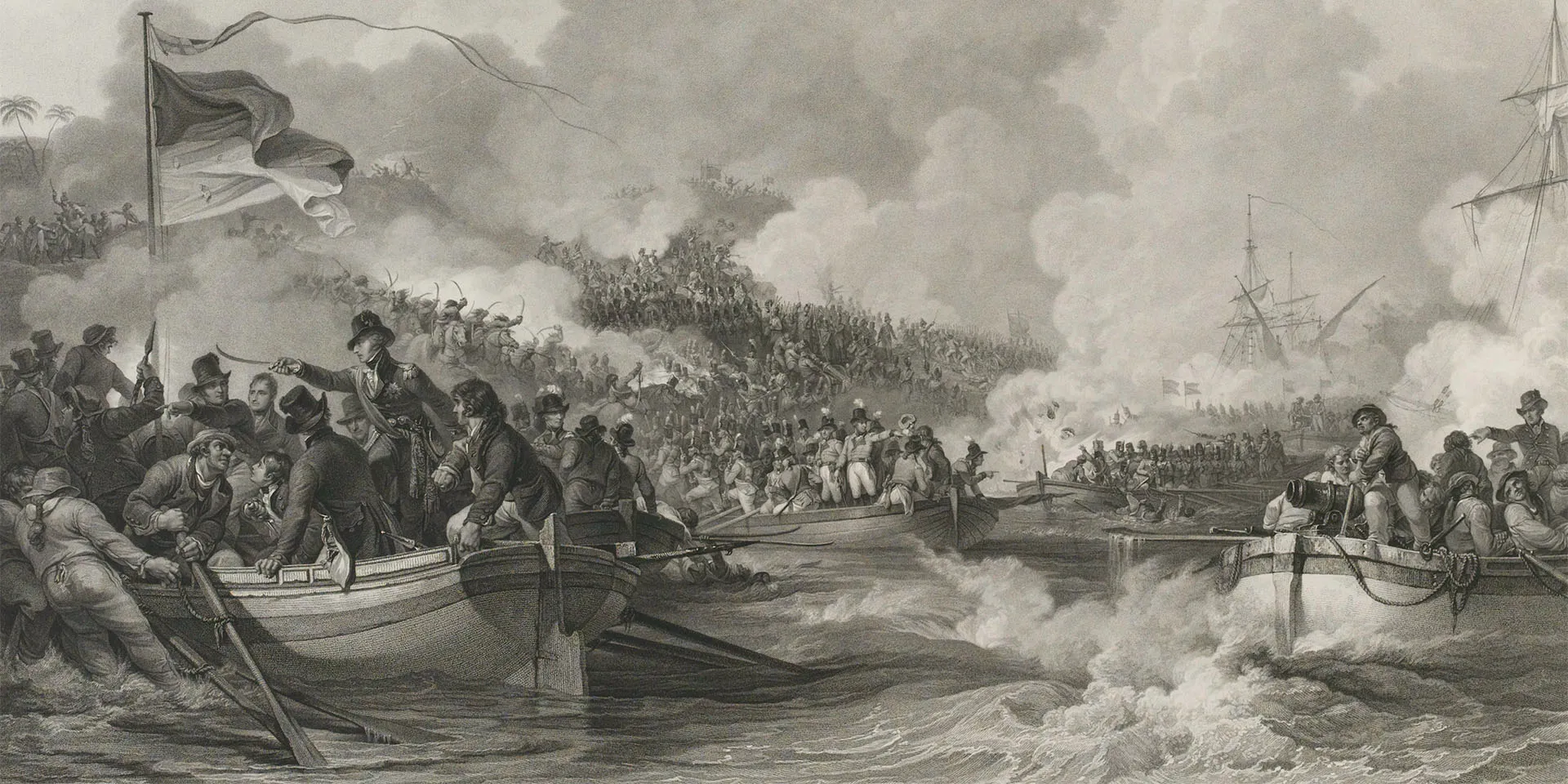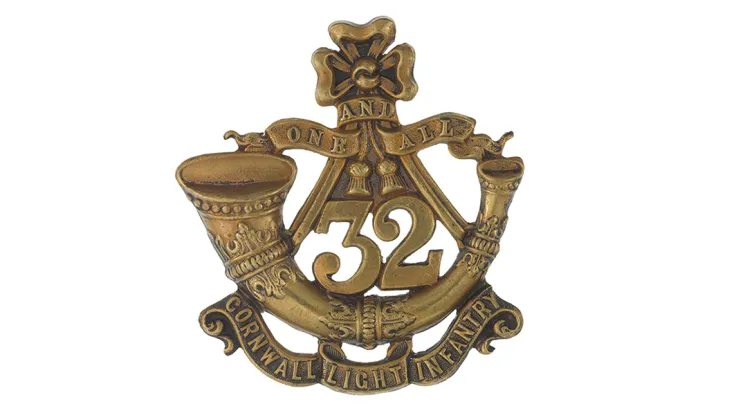Origins
In 1755, amid growing tension that resulted in the outbreak of the Seven Years War (1756-63), the Scottish nobleman John Campbell, Marquess of Lorne (later 5th Duke of Argyll) raised a regiment at Salisbury.
It was initially given the number 56 in the infantry order of precedence. However, this rose to 54 in 1756, when the 50th and 51st Regiments of Foot were disbanded.
18th century
That same year, the 54th Foot was sent to Gibraltar on its first overseas deployment. It spent the next 12 years in the Mediterranean, including some service as marines. In 1768, it began eight years' service in Ireland.
The regiment sailed for North America in 1776, fighting in the War of Independence (1775-83). It returned home in 1781, gaining its county association with West Norfolk the following year.
During the French Revolutionary Wars (1793-1802), it served in Guernsey (1793), Flanders (1794) and the West Indies (1795).
Following its return home in 1797, the regiment was sent to keep order in Ireland, a year after a failed French invasion. It remained there for three years and fought against the 1798 Rebellion.

The landing of the British troops in Egypt, 8 March 1801
19th century
The 54th Foot raised a 2nd Battalion in 1800. Unusually, this always fought alongside the 1st Battalion. Both served in raids on the Spanish coast in 1800, before moving back to Gibraltar.
The regiment was then sent to Egypt in 1801, landing at Aboukir and fighting in the Battle of Alexandria. Later that year, it captured Fort Marabout at the entrance to Alexandria harbour, for which it was awarded a battle honour and a sphinx on its badge.
It returned to Gibraltar in 1802, where it was the only unit to remain loyal during an outbreak of mutiny. Later that year, 2nd Battalion was disbanded, but the regiment remained in Gibraltar until 1805.
In 1807, the 54th sailed for the West Indies. During its two years there, it sent a detachment on the abortive 1807 expedition to capture the Spanish territories on the River Plate in South America.
The regiment spent the last five years of the Napoleonic Wars (1803-15) fighting in what is now northern Poland, northern Germany and the Netherlands.
As part of 4th Division, it held the Duke of Wellington’s right flank at Waterloo (1815), seeing no action during the battle but capturing Cambrai in its aftermath. It then joined the Army of Occupation in France for a year, before returning to Britain.
Victorian period
The regiment was sent to South Africa in 1819 to fight in the Fifth Cape Frontier War. It sailed directly from there to India three years later. This deployment lasted until 1840 and included service in Burma.
It spent the 1840s and much of the 1850s in England, Ireland, Gibraltar, Malta, the West Indies and Canada.
In 1857, it was sent from Britain to serve as reinforcements during the Indian Mutiny (1857-59). Some of its officers and men sailed on board the SS 'Sarah Sands', which caught fire en route in the Indian Ocean. The crew abandoned ship, but the troops on board managed to douse the flames and bring the ship into port.
The regiment was back in England from 1866, before returning to India in 1871.
Legacy
The regiment was still in India in 1881, when it was merged with the 39th (Dorsetshire) Regiment of Foot to form The Dorsetshire Regiment.
Regimental museums
The National Army Museum works with a network of Regimental and Corps Museums across the UK to help preserve and share the history and traditions of the Army and its soldiers.
Discover more about the 54th (West Norfolk) Regiment of Foot by visiting The Keep Military Museum in Dorchester.











